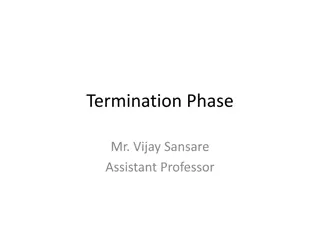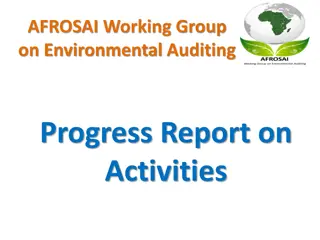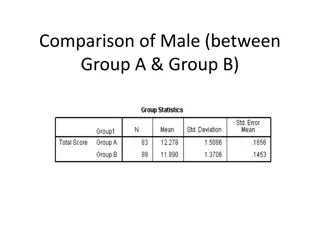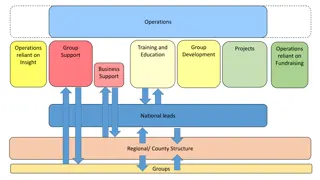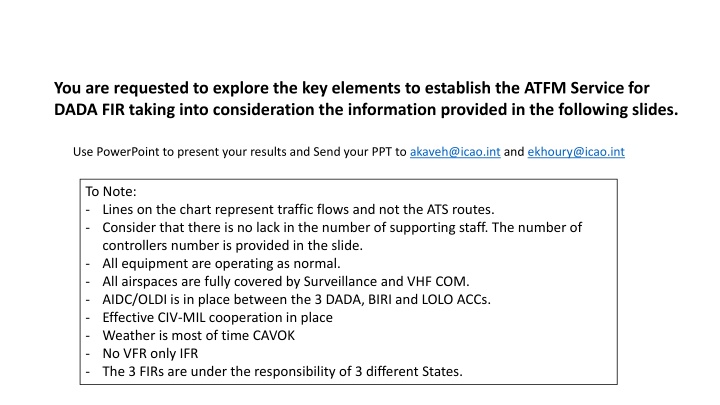
Establishing ATFM Service for DADA FIR: Key Elements & Considerations
Explore the essential components for setting up an ATFM service for DADA FIR with a focus on CAA regulations, organizational structure, functions, capacity determination, ATFM daily plan, stakeholders, and more. Use provided data to devise a comprehensive plan.
Download Presentation

Please find below an Image/Link to download the presentation.
The content on the website is provided AS IS for your information and personal use only. It may not be sold, licensed, or shared on other websites without obtaining consent from the author. If you encounter any issues during the download, it is possible that the publisher has removed the file from their server.
You are allowed to download the files provided on this website for personal or commercial use, subject to the condition that they are used lawfully. All files are the property of their respective owners.
The content on the website is provided AS IS for your information and personal use only. It may not be sold, licensed, or shared on other websites without obtaining consent from the author.
E N D
Presentation Transcript
You are requested to explore the key elements to establish the ATFM Service for DADA FIR taking into consideration the information provided in the following slides. Use PowerPoint to present your results and Send your PPT to akaveh@icao.int and ekhoury@icao.int To Note: - Lines on the chart represent traffic flows and not the ATS routes. - Consider that there is no lack in the number of supporting staff. The number of controllers number is provided in the slide. - All equipment are operating as normal. - All airspaces are fully covered by Surveillance and VHF COM. - AIDC/OLDI is in place between the 3 DADA, BIRI and LOLO ACCs. - Effective CIV-MIL cooperation in place - Weather is most of time CAVOK - No VFR only IFR - The 3 FIRs are under the responsibility of 3 different States.
You may address the following: 1. CAA Regulations 2. Organizational Structure 3. Functions 4. System to use 5. Capacity Determination for airspace and airports 6. ATFM Daily Plan (ADP) at least the main elements 7. ATFM Measures to be used 8. FF-ICE 9. Stakeholders 10. Expected timeframe to establish the basic ATFM service for TATA 11. others
Your Airspace DADA - Overflight 800 Flights/day - Airport Alpha 500 ARR & DEP flights/day (400 International) - Peak period (01:00 to 04:00-30% and 16:00 to 20:00-40%) - Airport Bravo 100 ARR & DEP flights/day (Domestic) - Airport Charlie 20 ARR & DEP flights/day (Domestic) - 1 ACC (3 Sectors) 40 Controllers - Average Sector time 15min - 1 APP unit 15 Controllers - ATC provided at Alpha and Bravo airports, 10 controllers each - AFIS at Charlie 6 Flight Information Service Officer Airspace LOLO Airspace BIRI - - - - - - - Overflight 500 flights/day (International) Airport Delta 800 ARR & DEP flights/day 1 ACC (4 Sectors) - 1 APP units ATC provided at Delta Int l airport NO FF-ICE ATFM Unit BIRI provides ATFM service to Airspace LOLO - - - - - - - - Overflight 1500 flights/day Airport Echo 300 ARR & DEP flights/day (250 International) Airport Foxtrot 600 ARR & DEP flights/day (550 International) 2 ACCs (4 +4 Sectors) 1 APP units ATC provided at Echo and Foxtrot BIRI FF-ICE Unit Services established ATFM Unit BIRI Established
LOLO Delta Int l Bravo Charlie DADA BIRI Alpha Int l Echo Int l Foxtrot Int l BIRI Low traffic flow Medium traffic flow Major traffic flow













